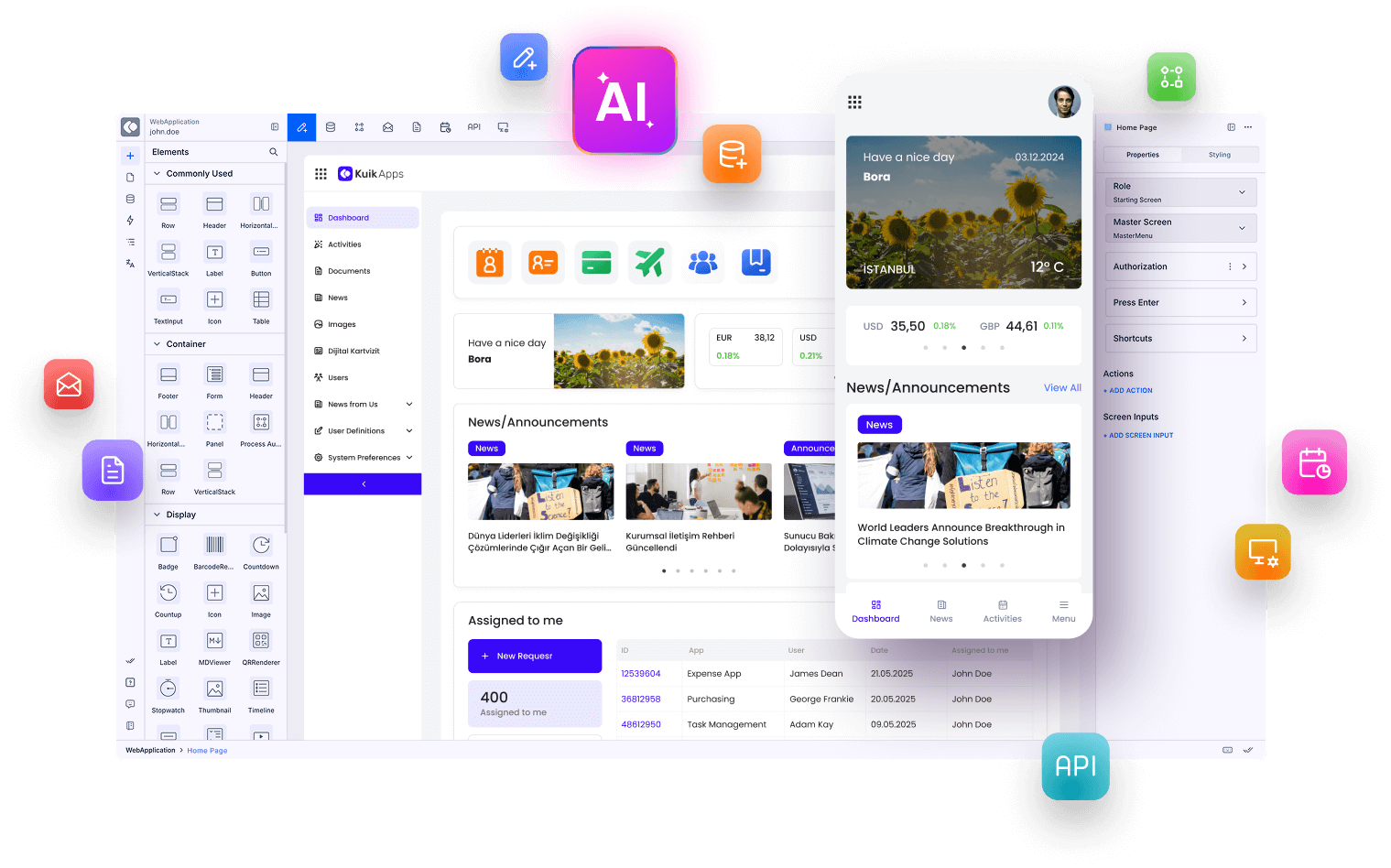Why do you need to use low-code platforms?
Low-code platforms allow you to develop and deploy applications without the need for traditional coding. This can be a major advantage when the time to market is critical or when resources are low.
Low code also offers the benefit of being more user-friendly and more accessible to learn than traditional coding languages. As a result, low code can be a powerful tool for businesses that want to quickly develop custom applications using limited coding knowledge.
In addition, low-code platforms can be used to rapidly prototype applications and get feedback from users before investing in a full-scale development project. For these reasons, low code is an attractive option for many organizations.
The statistics show that:
- In 2020, the global low-code platform market generated 13 billion dollars in revenue.
- In 2027, it is anticipated to amount to about 65 billion dollars.
Whether you're looking to speed up app development or create more robust business processes, low code can help. Keep reading to learn more!
Use cases of low code
Low code has a wide range of uses, as they offer a rapid and user-friendly way to develop and modify software with little to no coding required.
Here are some of the main use cases for low code:
Developing custom web and mobile apps
In today's fast-paced business world, time is of the essence. This is the reason why low-code platforms are gaining popularity for businesses that need to develop custom web and mobile apps quickly and efficiently.
Low-code platforms provide a visual development environment that doesn't require extensive coding knowledge. This enables you to create high-quality bespoke apps with minimal effort and time without hassle or expense.
In addition, low-code platforms offer a wide range of features and integrations that allow you to tailor their apps to their specific needs.
Automating business processes
If you are looking for a fast and efficient way to automate your repetitive and time-consuming business processes, give low code a try. Low-code platforms function just by dragging and dropping various software components to quickly build custom applications. This makes it easier for businesses to get started with automation.
This means that businesses can save time and money by automating their processes without having to hire expensive developers.
Creating prototypes and MVPs
Low-code platforms are perfect for quickly creating prototypes of applications. They are great for testing out ideas and getting feedback from users before investing time and resources into full development.
It is also easy to iterate and experiment with different ideas, as these groundbreaking platforms can make changes quickly and easily. As a result, they have become an essential tool for businesses that want to stay agile and competitive.
So if you're looking for a way to quickly create prototypes and MVPs, low code is the way to go.
Building BPMs
Low code is often used to build business process management (BPM) applications.
There are several advantages of using low code to build BPMs.
- It can dramatically reduce development time and costs.
- Low-code platforms typically include a wide range of built-in features and capabilities, making it easy to create comprehensive BPM solutions.
- Their user-friendly interface is ideal for citizen developers who may not have extensive coding experience.
- Low code offers the ability to easily customize and extend existing applications, allowing businesses to respond rapidly to changing needs.
Overall, low code offers a number of advantages for businesses that are looking to build BPM solutions. By reducing development time and costs, increasing flexibility, and improving usability, low code can help you achieve your BPM goals.

Integrating disparate systems
In today's business environment, it's more important than ever to have systems that are able to talk to each other. However, disparate systems can make providing this level of integration challenging.
System integration ensures you won't get bogged down by many different systems, and low code makes it easier to connect different systems, providing the foundation for a unified customer or employee experience.
By consolidating your data into a single location, you avoid having to enter the same information into multiple databases. You can also use the integration feature with IoT-enabled apps since they require integration between many disparate systems.
Creating dashboards and reports
Low-code platforms eliminate the need for specialized coding knowledge when building dashboards and reports. This is perfect for companies that want to visualize data from a variety of sources quickly and simply.
Drag-and-drop visual tools simplify creating custom dashboards and reports, while pre-built connectors to popular data sources make it easy to get started.

Deploying applications quickly
As the demand for mobile and web-based applications continues to grow, businesses are under pressure to deploy new applications without delay. Low-code platforms provide a solution to this problem by allowing you to develop and deploy applications without the need for extensive coding or development time.
This is ideal for businesses that need to get their applications up and running in a short period of time.
Designing UI
Building user interfaces for different browser versions and operating systems is a complex and time-consuming task. In addition to that, experts in the field are necessary. However, by using low code, you can reduce UI complexity and create a functional UI without hiring a professional.
Switching to microservices
Currently, businesses are transitioning from monoliths to microservices because it is easier to update the code in microservices. Additionally, microservices allow you to use different programming languages for distinct components.
However, converting monoliths to microservices is not a simple endeavor. Fortunately, low code makes your job simpler and accelerates the process.
Key takeaways
Low-code platforms offer a wide range of benefits for businesses of all sizes. They can save businesses time and money while also improving efficiency and accuracy.
If you're looking for a quick and easy way to develop custom applications, automate business processes, or create prototypes, a low-code platform could be the perfect solution for you.
This article has introduced you to the primary use cases of low code. We would be happy to discuss your specific case if you're interested in learning more. Let us know how we can help!
















